Last month, Nonprofit VOTE and the U.S. Elections Project released America Goes to the Polls, our report that looks at all 50 states turnout in 2018 and the policies that impacted it.
In 2018, we saw history being made as voters across the country turned out in numbers not seen in a midterm election in over 100 years.
When measured against voting eligible population, voter turnout was 50.3%, the largest increase in turnout from the previous midterm in U.S. history.
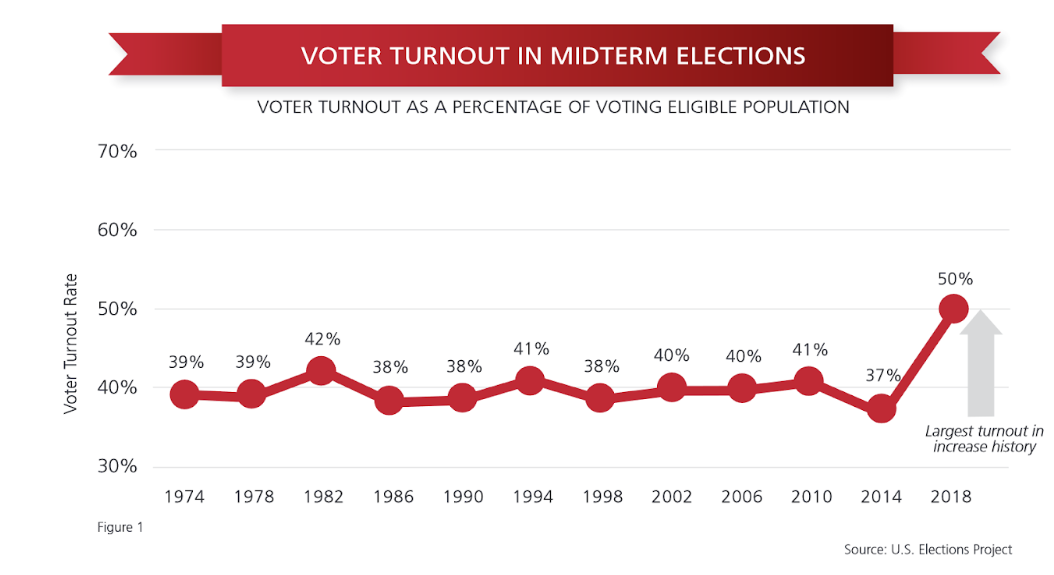
Even states without competitive statewide elections saw record turnout, which makes clear that national factors, including support and opposition to the Trump presidency, were driving the voters to the polls.
But beneath this record turnout is a more important and informative story – a story that the report seeks to tell. Despite the record turnout nationwide, vast differences in voter turnout between states persisted, turnout differences driven largely by election-related policies.
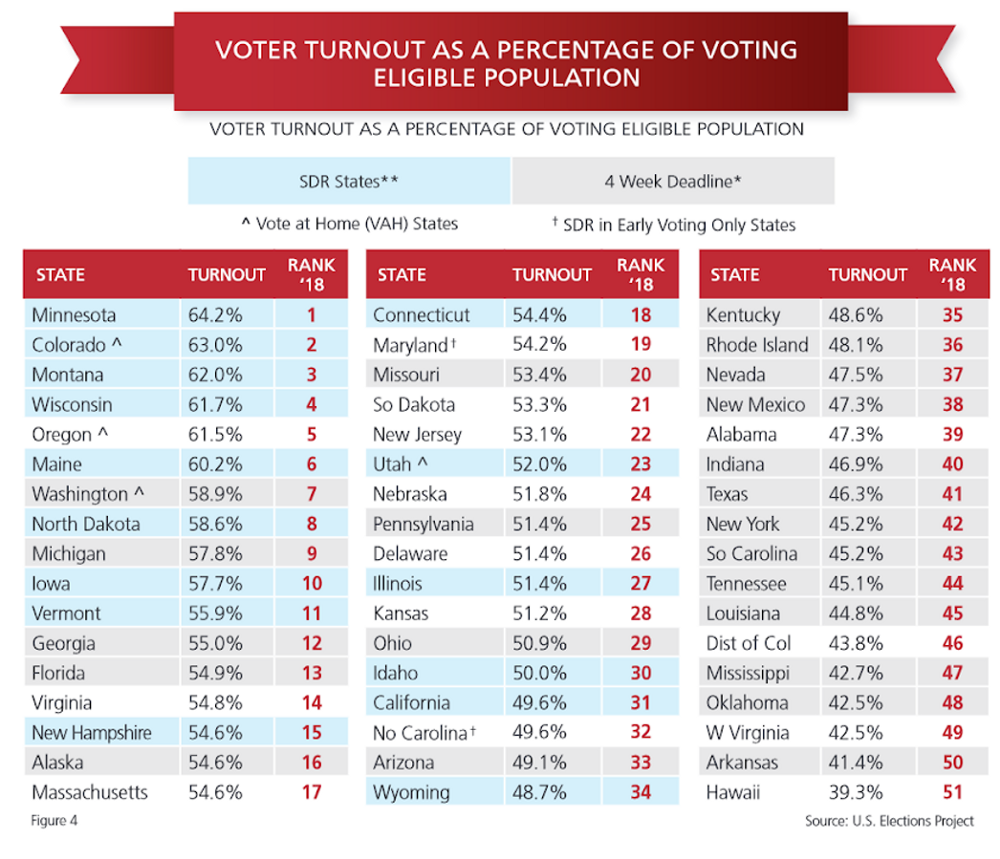
The top 10 states – with voter turnout averaging over 60% – had policies that promote greater participation in our democracy.
Seven of the top 10 states had Same Day Registration (SDR) that lets voters register or fix a problem with their registration when they vote the day of.
Three of the top 10 allow its citizens to Vote at Home (VAH) with ballots that can be mailed in or dropped off at a nearby secure vote site.
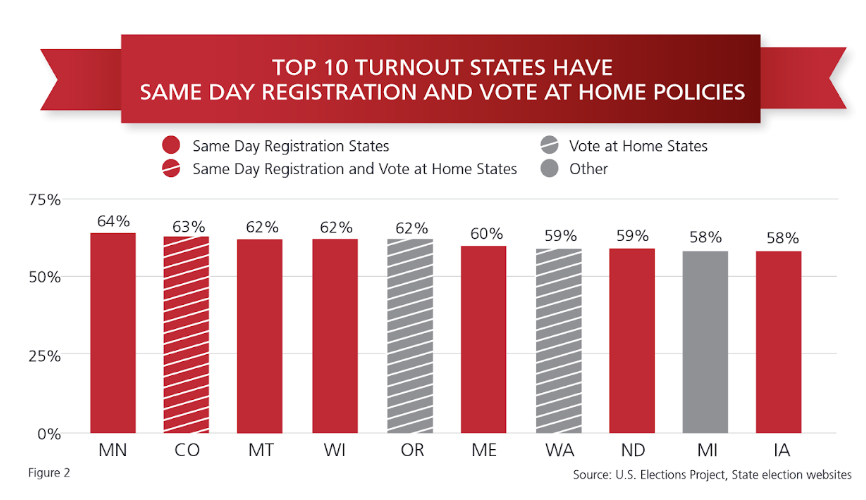
By comparison, the bottom 10 states had turnout averaging just over 40%, a full 20 points lower.
Most all (eight of ten) – went to the other extreme, requiring voters to be registered a full four weeks ahead of Election Day.
None of the bottom 10 states had policies like Vote at Home or AVR known to make voting easier and more convenient and improve the accuracy of voter rolls
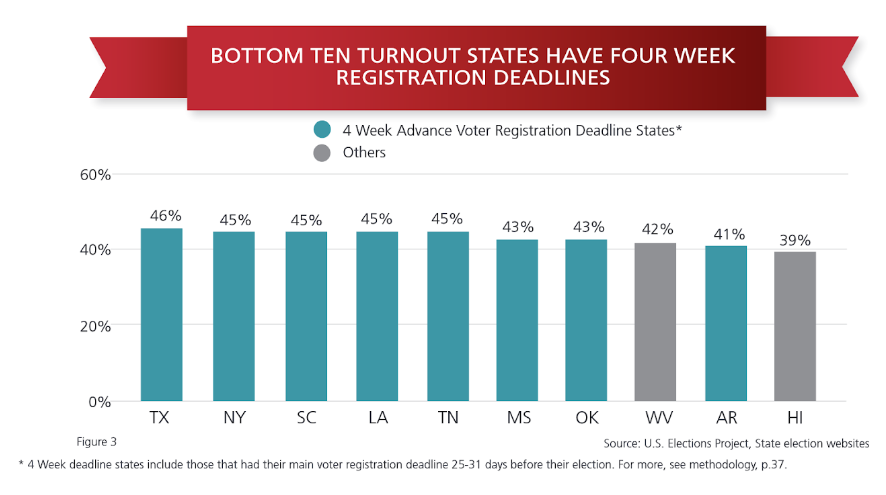
In addition, 17 states and the District of Columbia adopted Automatic Voter Registration (AVR) – a relatively new policy that makes registration the default option when you visit offices like the DMV.
It contributed to registration records in Oregon where the DMV recorded 303,362 new registrations and 623,188 registration updates and in California where since April the state processed 828,221 new voter registrations, and 330,036 address updates.
In Vermont, it helped bring registration to an astonishing 92.5% of all its eligible voters in 2018. They cited benefits such as more people registered with more complete and accurate information and applications easy to process and faster to update for Election Day
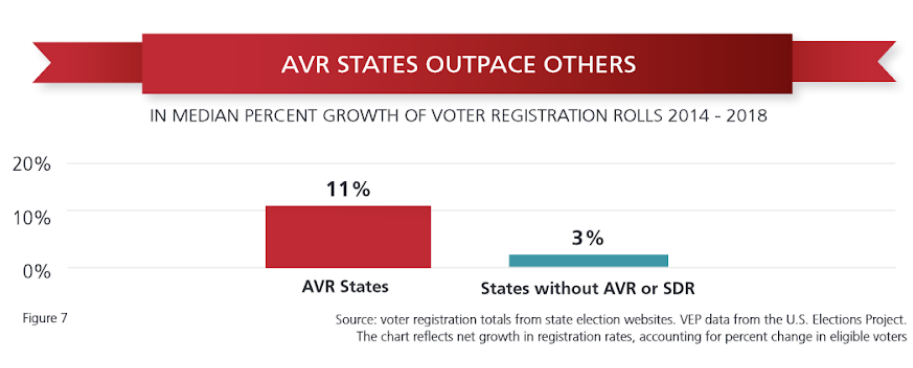
While the historic turnout of the 2018 elections have captured the nation’s attention, the interplay of public policy and voter turnout between states contains far more valuable lessons for policy makers and advocates across the country. By lifting up these differences and the policies that drive them, we hope this report provides a road map for strengthening our democracy and ensuring that more eligible voters participate and vote… year-after-year.




